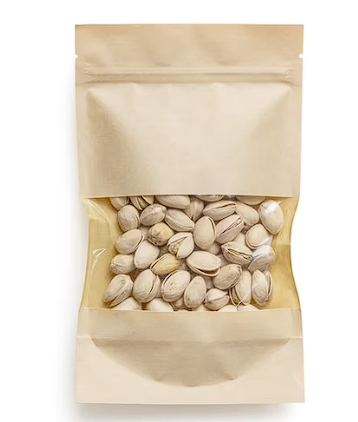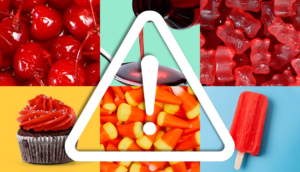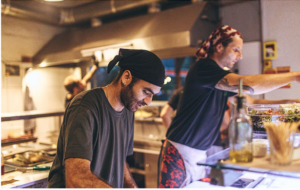- Food Startup Funding: Do you need investors to build a successful food or beverage business? - February 29, 2024
- Explaining Food Certifications & Labeling: Organing, Non-GMO, Halal, Kosher, & More! - February 29, 2024
- Explaining the Meaning of MOQ - February 29, 2024
Retort packaging has become increasingly popular as the demand for convenient, shelf-stable products grows. This innovative packaging method provides an efficient and flexible solution for preserving food items, offering an alternative to traditional canning.
According to the United States Department of Agriculture (USDA), the retort process involves sealing the food in a pouch made of heat-resistant material, which is then subjected to a combination of steam and pressure in a retort chamber. This method offers numerous benefits for co-manufacturers seeking an efficient and flexible packaging solution.
As co-manufacturers navigate this space, understanding the pros and cons of using retort pouches can help determine whether this type of packaging is suitable for your product.
What is a Retort Pouch?
A retort pouch is a food-grade, laminated pouch that’s specially designed to withstand high temperatures during the sterilization process, enabling the food packaged within to have a longer shelf life. Some products that retort pouches are suitable for include seafood, pet food, snacks, vegetables, baby foods, and dairy.
Constructed from multiple layers of high-barrier materials, retort pouches provide excellent protection against moisture, oxygen, and light, preserving the taste, texture, and nutritional content of the food inside. These pouches are typically made from a combination of materials such as polyester, aluminum foil, and polypropylene, which work together to create a robust, heat-resistant package capable of withstanding the retort sterilization process.
For food business owners, retort pouches present an opportunity to optimize product quality, reduce packaging costs, and meet the growing consumer demand for convenience and sustainability. They can be a good alternative to traditional packaging methods like metal canning, offering a more lightweight, flexible, and space-saving solution for food storage and transportation.
History of Retort Pouches
The history of retort pouches dates back to the 1960s when the US Army began exploring alternative packaging methods that would provide a lightweight, durable solution for meals in the field. The military needed a packaging solution that would allow for easy transportation and storage, as well as an extended shelf life for rations without compromising the quality of the food.
The retort pouch was finally developed as a collaboration between the US Army’s Natick Soldier Research, Development, and Engineering Center (NSRDEC) and private industry. This innovative packaging method combined the benefits of traditional canning with the advantages of flexible packaging materials, resulting in a more efficient and practical solution for preserving and transporting food.
Since their inception, retort pouches have undergone numerous improvements and innovations, such as the development of more advanced barrier materials and the integration of microwave-safe features. These advancements have made retort pouches an increasingly attractive option for food manufacturers seeking a versatile, efficient packaging solution.
Popularity & Growth of Retort Pouches
Retort pouches have gained popularity in the consumer packaged goods (CPG) market due to their cost-effectiveness, convenience, and sustainable features. These flexible packaging options provide consumers with easy-to-use, shelf-stable products that require minimal preparation and offer extended shelf life. Retort pouches also help reduce packaging waste and carbon emissions due to their lightweight nature, making them an environmentally-friendly choice in the food industry.
The global retort pouch market has experienced significant growth in recent years and is expected to continue expanding as more food manufacturers adopt this innovative packaging solution. According to a market research report by IMARC Group, the worldwide retort pouch market is projected to experience robust growth in the coming years, driven by factors such as increasing demand for convenience foods, growing awareness about the environmental impact of packaging materials, and advancements in pouch technology.
The report also highlights the importance of the Asia-Pacific region in the growth of the retort pouch market, with countries such as China, India, and Japan contributing significantly to the increasing demand for this type of packaging. This can be attributed to factors such as rapid urbanization, changing lifestyles, and a growing middle-class population seeking convenient food options.
As consumer preferences continue to evolve and environmental concerns become more prominent, it’s expected that the global retort pouch market will maintain its upward trajectory in the coming years.
Is Retort Packaging Safe?
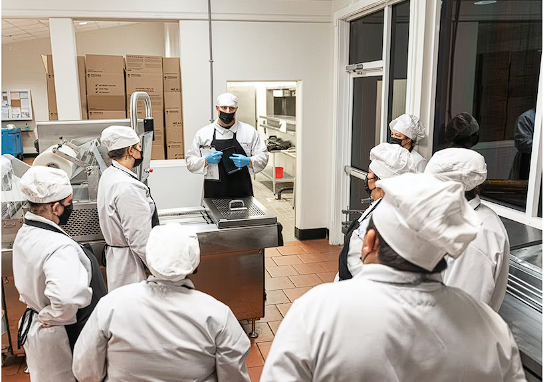
Retort packaging is considered safe when the materials and processes used comply with food-grade industrial standards. High-quality retort pouch suppliers ensure that their products undergo strict testing and adhere to regulations, providing peace of mind for brands and consumers alike.
It’s important for food business owners to work with reputable packaging suppliers who maintain high standards for quality control and regulatory compliance. This includes selecting pouch materials that are approved by governing bodies such as the U.S. Food and Drug Administration (FDA) and the European Food Safety Authority (EFSA), as well as ensuring that the retort sterilization process is properly conducted to effectively eliminate or reduce harmful microorganisms.
By partnering with a reliable retort pouch supplier and adhering to industry best practices, food business owners can confidently utilize retort packaging as a safe and effective means of preserving and protecting their products. Ultimately, the safety of retort packaging depends on the quality of materials, the sterilization process, and the diligence of both the packaging supplier and the food manufacturer in maintaining compliance with all relevant safety standards.
Searching For Your Perfect Co-packer?
Retort Pouch Production Process
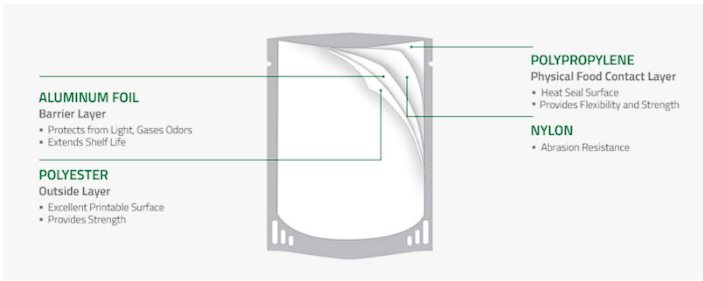
1. Design & Printing
Business owners work closely with retort pouch manufacturers to create custom designs that match their brand and product. The design is then printed on a suitable substrate such as metal foil or food-grade film.
2. Lamination
Retort pouch construction involves laminating various layers to provide resistance to heat, oxygen, and moisture. It can include the lamination of metal foils, plastic films, and other food-safe materials depending on the desired packaging properties.
3. Shaping
The pouch material is cut and sealed into its final shape, ensuring it has a tight seal and consistent thickness.
4. Filling
The pre-cooked or ready-to-eat meals are filled into the pouches under controlled conditions to maintain hygiene and quality.
5. Sealing
Pouches are then hermetically sealed, ensuring that no contaminants can enter the packaging and compromise the contents.
6. Sterilization
Finally, the sealed pouches undergo a sterilization process at high temperatures to kill any remaining bacteria or pathogens to make the products shelf-stable.
Benefits of Using Retort Pouches

Cost-effective
Retort packaging requires fewer materials than traditional packaging methods, ultimately reducing manufacturing costs. These savings can be translated into improved business margins or lower prices for consumers, making your products more competitive in the marketplace.
Convenient for Producers & Consumers
Retort pouches are lightweight, easy to use, portable, and compatible with both wet and dry products, streamlining the production process while also allowing for easier transportation and storage for consumers. This added convenience can be an appealing selling point that differentiates your products from those of competitors.
Sustainable
Retort pouches require fewer resources to manufacture and can often be recycled, making them more environmentally friendly than other packaging options. By embracing this sustainable packaging solution, you can attract eco-conscious customers and enhance your brand’s image, reflecting a strong commitment to protecting the environment.
Longer Shelf Life
The airtight design and sterilization process helps preserve the quality of the packaged food for extended periods, reducing the risk of contamination or spoilage. This extended shelf life contributes to reduced food waste and ensures your customers can consistently enjoy your products in optimal condition.
Durable Material
High-quality retort pouch material ensures the package remains intact throughout production, transportation, and storage, preventing product leaks or damage. The durability of retort pouches can protect your products from potential accidents during handling, ensuring satisfaction and building trust with your customers.
Disadvantages of Retort Pouches
While retort pouches offer numerous advantages for food packaging, it’s important to acknowledge their potential drawbacks.
Higher Initial Investment
The sophisticated technology required for retort pouch production may represent a significant upfront investment for manufacturers. As a food business owner, you should evaluate the financial viability of this packaging option and consider partnering with established co-manufacturers to alleviate the initial costs.
Complex Processing
Brands may find it challenging to source co-manufacturers specializing in retort packaging due to the specific equipment and expertise required. Partnering with the right co-packer or contract manufacturer can help you access the necessary resources and skills efficiently while mitigating the complexity of this process.
Susceptible to Breaking or Puncturing
Despite their durability, retort pouches can be susceptible to punctures, cuts, or other damage during handling or transportation. Ensuring proper handling and packaging materials can minimize this risk and maintain the integrity of your products throughout the supply chain.
Is Retort Packaging Right For Your Food or Beverage Product?
Deciding whether retort packaging is the right choice for your food or beverage product involves carefully weighing the advantages and disadvantages of this innovative packaging method. By considering factors such as cost, product compatibility, consumer preferences, and environmental impact, you can make an informed decision that best aligns with your specific product needs and business goals.
If you’re unsure about your options or need guidance in selecting the ideal packaging solution, PartnerSlate’s Project Marketplace can connect you with the right co-manufacturers and packaging partners that best suit your requirements. Just set up your profile, list your project specifications, and wait for the right partner to come to you. We’ll connect you with several options and then streamline the documentation and onboarding process so you can get your products to the shelves that much faster.
